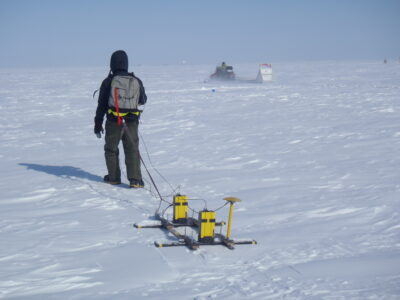To achieve a predictive understanding of terrestrial systems, the Environmental System Science (ESS) program within the U.S. Department of Energy’s (DOE) Office of Biological and Environmental Research (BER) uses a coupled modeling-experimental (ModEx) approach for examining terrestrial system properties. Of particular interest are systems that exhibit large uncertainties in their functions, feedbacks, and dynamics and, consequently, are insufficiently captured in open-source or community models. The program aims to improve the representation of ecological and hydro-biogeochemical processes in coupled models, thereby increasing the sophistication of the projected interpretations from those models. Model predictions are also compared against observations or field experiments to identify critical uncertainties that can inform priorities for future observational and field research directions.
ESS is a recognized leader in undertaking and integrating research across disciplines (e.g., microbial, vegetative, geochemical, and hydrological science) and in applying state-of-the-art ecosystem manipulations to understand inherent and emergent properties of changes to Earth and environmental systems. Ultimately, the program uses the knowledge gained from these approaches to advance models that capture the function and dynamics of watershed and ecosystem processes.
Science Across Scales
ESS research employs lab- and field-based experiments and modeling to enhance the understanding of ecosystem and hydro-biogeochemical processes across an enormous range of spatial and temporal scales. Applying an open-science and open-data philosophy, the ESS program supports a complementary and coordinated mix of university and national laboratory–led science projects that represent short-term experiments, decadal projects, and longer-term studies. These projects include:
- Observation networks such as the Worldwide Hydrobiogeochemical Observation Network for Dynamic River Systems (WHONDRS) and AmeriFlux Network.
- Large-scale, decadal and longer-term investigations such as science focus area (SFA) projects, next-generation ecosystem experiments (NGEE) in the Arctic and tropics, Spruce and Peatland Responses Under Changing Environments (SPRUCE), and earlier free-air CO2 enrichment (FACE) studies.
- Development and use of process models and Earth system models.

Genomic Science program researchers have tracked the genomic composition of microbes in thawing permafrost to determine which had the greatest impact on releases of carbon dioxide and methane into the atmosphere. [Courtesy Environmental Molecular Sciences Laboratory]
Leveraging Other DOE Assets
ESS seeks to connect its projects closely to other research programs within BER’s Earth and Environmental Systems Sciences Division (EESSD), across BER, and in coordination with other federal agencies. ESS research activities are increasingly coordinated with EESSD’s modeling activities through research solicitations and jointly funded projects. Examples of such coordination include NGEE, Energy Exascale Earth System Model (E3SM) co-development, the International Land Model Benchmark project (ILAMB), Interoperable Design of Extreme-scale Software (IDEAS)-Watersheds project, hydrology modeling frameworks, and land-atmosphere measurements.
Additionally, ESS coordinates with the Genomic Science program (within BER’s Biological Systems Science Division) and encourages use of DOE Office of Science user facilities and other community resources including:
- Environmental Molecular Sciences Laboratory, which provides premier instrumentation and computational capabilities for exploring molecular to mesoscale biological, chemical, and physical processes and interfaces.
- Joint Genome Institute, which provides genome sequencing, genome data acquisition, and genome analyses.
- Environmental Systems Science Data Infrastructure for a Virtual Ecosystem (ESS-DIVE), which provides an archive for subsurface and terrestrial ecosystem science data.
- Systems Biology Knowledgebase (KBase), a software environment that provides microbial, plant, and community data to understand the structure and function of biological systems.
- Structural Biology and Imaging Resources at DOE synchrotron and neutron facilities, which provide instruments and technologies to study and understand structural and functional processes of microbial and plant cells and communities.
- National Microbiome Data Collaborative, an open data science infrastructure enabling discovery of and access to multiomics microbiome data.
ESS research is also leveraged with other program offices within DOE’s Office of Science, including Advanced Scientific Computing Research (ASCR), Scientific Discovery Through Advanced Computing (SciDAC), and Basic Energy Sciences (BES).
Internal DOE and external programs with complementary research or actively leveraging ESS-funded activities include DOE’s Office of Environmental Management and Office of Legacy Management, as well as the Department of Defense’s Strategic Environmental Research and Development Program.

